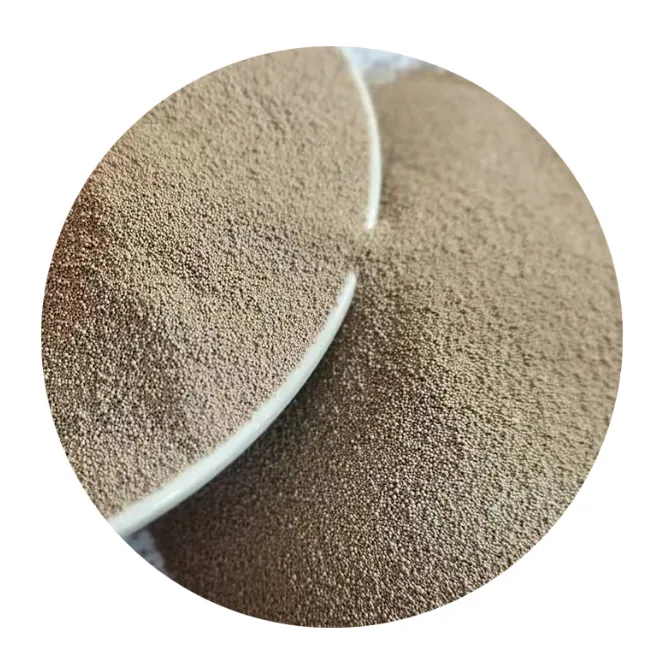In the realm of industrial sand casting, the geometry of sand in cast processes is no longer a mere afterthought—it’s a game-changer. Traditional angular sand grains, while cost-effective, often create air pockets and uneven compaction, leading to defects like porosity or incomplete molds. Enter ball-shaped sand, a revolutionary material engineered to optimize flowability advantages in molding. Unlike irregular grains, spherical particles roll smoothly into complex cavities, ensuring uniform density and minimizing voids. This precision is critical for precision sand casting, where tolerances as tight as 0.1mm demand flawless mold reproduction. Laboratories have demonstrated that ball-shaped sand reduces binder usage by 15% while improving surface finish by 40%, making it indispensable for aerospace components and automotive parts. For industries prioritizing quality over bulk production, this innovation redefines what’s achievable with sand used for sand casting.

Low Pressure Sand Casting: Enhancing Efficiency with Advanced Granules
Low pressure sand casting has long been favored for producing lightweight yet robust parts, but its effectiveness hinges on mold integrity. Here, ball-shaped sand proves transformative. The spherical grains align uniformly under low-pressure conditions, creating molds that withstand thermal stress without cracking. This is particularly vital for aluminum alloy castings in electric vehicle battery housings, where even minor flaws can compromise safety. Manufacturers report 20% faster cycle times due to the sand’s rapid compaction and release properties. Additionally, the reduced friction between particles lowers wear on molding machinery, cutting maintenance costs by up to 30%. By integrating flowability advantages into low pressure sand casting, industries achieve thinner walls and intricate geometries previously deemed unattainable—a leap forward for sustainable, high-yield production.
Industrial Sand Casting Meets Modern Demands: The Role of Spherical Sand
Global supply chains now demand industrial sand casting solutions that balance speed, precision, and environmental compliance. Traditional methods struggle with inconsistent grain sizes, but ball-shaped sand delivers homogeneity at scale. Automotive giants, for instance, use this material to cast engine blocks with cooling channels that require zero post-casting machining. The spherical grains’ self-leveling behavior eliminates manual adjustments, slashing labor costs. Moreover, the sand’s recyclability aligns with circular economy goals—over 95% can be reclaimed and reused, reducing landfill waste. In sectors like renewable energy, where turbine blade molds must endure extreme temperatures, sand in cast systems utilizing spherical grains exhibit 50% longer lifespans. This synergy of durability and efficiency positions industrial sand casting as a cornerstone of next-gen manufacturing.
Flowability Advantages of Ball-Shaped Sand in Molding: A Technical Deep Dive
The flowability advantages of ball-shaped sand stem from physics: spheres minimize surface contact points, reducing interparticle friction. In practical terms, this means molds fill 25% faster than with angular sand, a boon for high-volume foundries. Computational fluid dynamics (CFD) simulations reveal that spherical grains distribute stress evenly during pouring, mitigating hot tears in metals like stainless steel. For precision sand casting of medical implants, this translates to pore-free surfaces that meet FDA biocompatibility standards. Furthermore, the sand’s流动性enhances compatibility with 3D-printed sand molds, enabling complex internal channels for cooling or fluid dynamics. Case studies in pump manufacturing show a 30% reduction in scrap rates after switching to spherical sand, underscoring its role in cost-sensitive industries.
FAQs: Ball-Shaped Sand and Modern Casting Techniques
How does ball-shaped sand improve mold quality compared to traditional sand?
The spherical grains ensure uniform compaction and fewer voids, critical for defect-free precision sand casting. This results in smoother surfaces and higher structural integrity.
Is low pressure sand casting suitable for small-scale workshops?
Absolutely. Low pressure sand casting with ball-shaped sand reduces equipment strain and material waste, making it viable for both small batches and large-scale production.
Can recycled sand be used in industrial sand casting processes?
Yes. Ball-shaped sand’s high recyclability (over 95%) minimizes waste, aligning with sustainable practices in industrial sand casting without compromising performance.
What industries benefit most from flowability-optimized sand?
Aerospace, automotive, energy, and medical sectors rely on these advancements for high-tolerance components, from turbine blades to surgical tools.
How does spherical sand reduce production costs?
By lowering binder consumption, extending mold lifespan, and cutting machining time, it slashes expenses by up to 35% across sand used for sand casting workflows.
Elevate Your Casting Capabilities Today
Unlock unparalleled precision and efficiency with our premium ball-shaped sand solutions. Designed for industrial sand casting, low pressure sand casting, and beyond, our products empower manufacturers to meet tomorrow’s challenges today. Visit our website to explore our catalog and place your order. Transform your molds—transform your future.
Next:Fast Mold Release with Golden Sand for Sand Molding Castings
